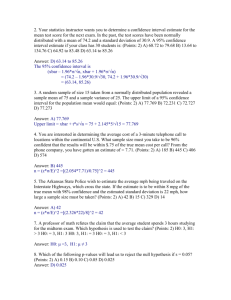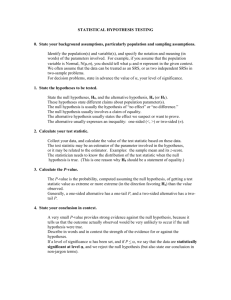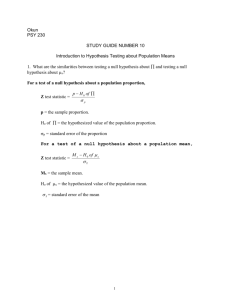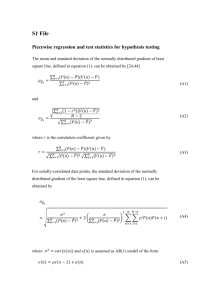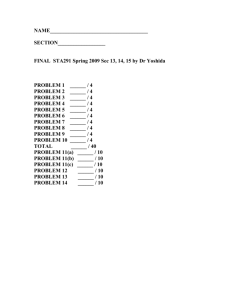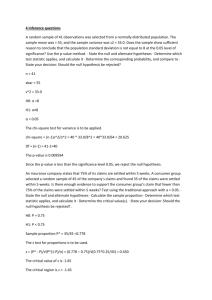Lab #8 Demonstration
advertisement
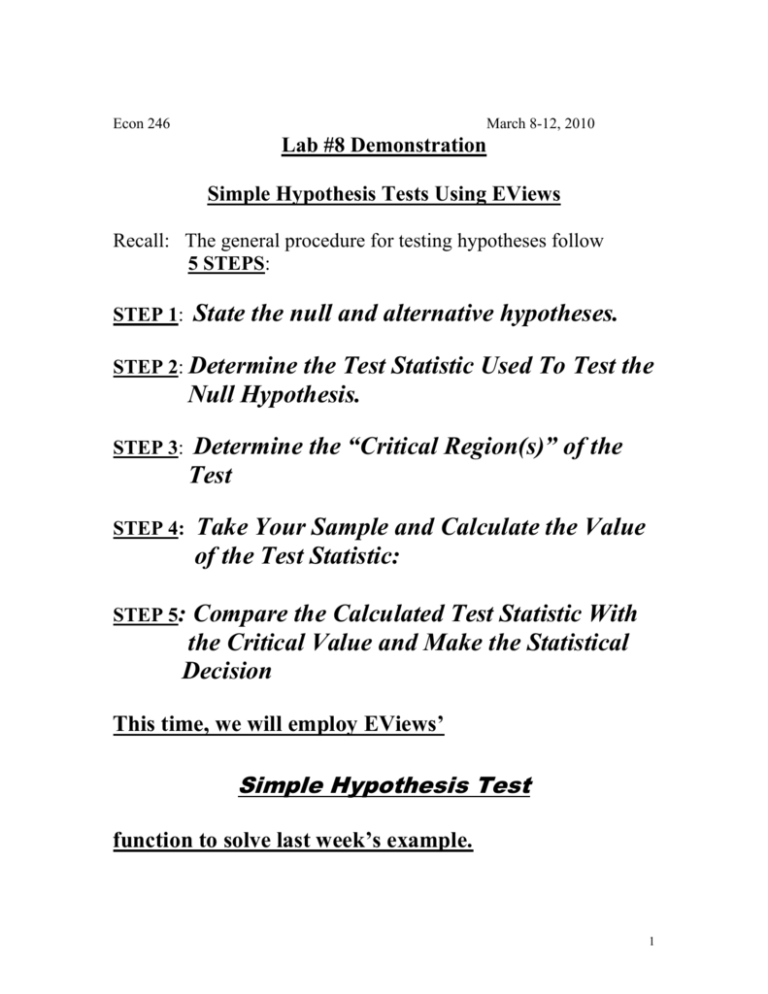
Econ 246 March 8-12, 2010 Lab #8 Demonstration Simple Hypothesis Tests Using EViews Recall: The general procedure for testing hypotheses follow 5 STEPS: STEP 1: State the null and alternative hypotheses. STEP 2: Determine the Test Statistic Used To Test the Null Hypothesis. STEP 3: STEP 4: Determine the “Critical Region(s)” of the Test Take Your Sample and Calculate the Value of the Test Statistic: STEP 5: Compare the Calculated Test Statistic With the Critical Value and Make the Statistical Decision This time, we will employ EViews’ Simple Hypothesis Test function to solve last week’s example. 1 To illustrate follow along with this example: A Wendy’s franchise has been averaging about $5,000 worth of business on a typical Saturday. The manager, concerned that sales are slipping, considers the average sales for four consecutive Saturdays. A) We established this to be a one-sided lower tailed test. H0 : $5000 Ha : < $5000 B) What test statistic should you use if is known to equal $500? STEP 2: Determine the Test Statistic Use Z: Z X n If is unknown we must use t: X t s n . The sample standard deviation must be determined from the sample. 2 C) Find the critical values for X and Z, assuming that = 0.05. That is, find the rejection region: = 0.05; n=4; one-sided test. Without a Z-table we use EViews to determine the critical value for Z: In the command window type: show @qnorm(0.05) Rounding it up, -Z0.05=-1.645. This is the critical Z-value. This is our rejection/acceptance boundary point. Any values to the left of -1.6448 will lead to a rejection of the null hypothesis. 3 If we did not know the population variance, the code to determine the critical value for the t-distribution with 3 degrees of freedom is: show @qtdist(0.05,3) The critical value for the t-distribution is -2.353363. D) What decision should be made in regard to the hypotheses if sales are $4,200, $4,400, $5,200 and $4,800 on the four Saturdays? What probability could be reported in this example? In EViews, open up a new workfile and specify a range of 1 to 4. Click on “QUICK” and “EMPTY GROUP.” Enter the four sales figures: 4 Under View, we can directly test the null hypothesis with this sample: Click: View / Tests for Descriptive Stats / Simple Hypothesis Tests 5 A box will appear. To test whether the mean equals 5000 with a known variance and standard deviation, fill in the box as follows: Click OK: The computed Z value is -1.4 (Green Arrow) Since the computed value is to the right of the critical value, we cannot reject the null. 6 Notice that EViews reports a TWO sided P-value. (Red Arrow.) For this one sided test, we would divide the pvalue in half. If the variance of the population is unknown, we would use the sample variance to solve this problem. Looking again at the sample statistics: The sample standard deviation is 443.4712. To determine the computed value and derive the p-value, follow the same procedure as the Z-value, but use sample standard deviation: 7 Go To: View / Tests for Descriptive Stats / Simple Hypothesis Tests Fill in the box with only the mean test value. 8 The computed value is -1.578457. The critical value was -2.353. We would not reject the null at the 5% level. Now your exercise: 9


